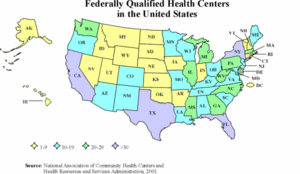Introduction
Employee network groups, also known as advocacy, affinity or resource groups, are formally established groups of employees organized based on social identity, such as gender or ethnicity. Employee network groups can be traced back to the 1970s when women and African-Americans began to be hired into management positions in significant numbers.[1] While women or minorities usually form these groups, groups also exist for older employees, employees who are relatively new to the company and employees with certain religious beliefs. Typically, employee network groups are self-controlled and self-organized, with minimal corporate support in the form of permission to use rooms, equipment and company email. Group meetings occur on a regular basis in most instances, usually once or twice a month either during lunchtime or before/after work hours. Meeting activities vary by group, but some of the most common activities are discussions on issues pertaining to the particular group, leadership seminars and hosting guest speakers. When there are no formal activities or events at the meetings, members simply get together and talk about current events or their lives in a safe, comfortable atmosphere. Even though these forums are required to be open to all members of the company, usually members share a specific characteristic or interest. Most companies formally recognize employee network groups, providing they are self-funded, a structure exists and there are regular meetings and objectives.
Prevalence of Employee Network Groups
Currently 90% of Fortune 500 companies have employee network groups.[2] The importance of these and other diversity programs are expected to increase in the future as the demographics of the US workforce changes. Census figures show the Caucasian male population will remain flat in future years while minority groups, particularly Hispanic groups are on the rise. Also, the influx of immigrants is at its highest rate since World War I. In addition, the number of working women grew to 69 million in 2004 representing 47% of the workforce. The Bureau of Labor Statistics reports that women and minority groups will account for 70 percent of new job seekers by 2008. In addition, statistics tell us that homosexuals make up 10% of the American population. With increased acceptance of the lifestyle in nondiscrimination clauses, affinity groups should also rise. Furthermore, there is a rising in the average age of the workforce, meaning more older workers. As these groups see an increase in their power, their demand for employee network groups will also increase. Why People Join Employee Network Groups
While each person has his or her own reason for joining employee network groups, there are certain motivations that seem most common. Some people join network groups because they feel that they lack support from the organization they work for and need support and coaching from group members. Others are drawn to affinity groups simply because of the attraction of community and social ties. The social ties are established through meeting regularly with people who share certain characteristics or interests, while the community ties result from activities involving the whole community, such as volunteer events or scholarship dinners.
Others choose to join network groups at work because they are most at ease when they are around people like themselves. Social network theory researchers use the term homophily to describe this phenomenon where people are more comfortable with and thus interact more with those people who are similar to them.[3] This leads to fewer relationships for minority employees who find it difficult to find others like themselves. On the other hand, employees in the majority, or white men, are already surrounded by people just like themselves and have many network ties to those people. Therefore, people who are not part of the majority group join network groups to discuss matters in a more comfortable setting and to establish more network ties than they would from their homogeneous work groups.
Dr. Beverly Tatum offers yet another reason why network groups are appealing to minority employees. Since people of color are the extreme minority in corporate settings, it can become very difficult for them when racist comments are made in their presence. This can lead to stressful situations, where a minority group member is offended and is afraid to say something for fear of losing his or her job or appearing to be too sensitive. Meeting with a group of other minority group members can be helpful in situations like this because members will likely be more sympathetic and understanding. Plus, network group members can provide advice from past experiences. Tatum gives a perfect example of this in her book, “Why Are All the Black Kids Sitting Together in the Cafeteria?” A Black woman working in a mostly White school system was often distressed by comments from White teachers making fun of Black students. However, since she was young, inexperienced and untenured, she was afraid to speak up. It was only when she participated in a workshop and had the opportunity to meet with other Black educators that she was able to vent and discuss solutions to the situation at her school.[4]Benefits of Employee Network Groups
Both employers and employees hope to achieve many benefits through the existence of employee network groups. From the standpoint of the employer, there are many advantages to having affinity groups. First, these groups are thought to be a diversity initiative since they recognize that certain groups of people are underrepresented in the organization. Acknowledging minority network groups sends a message to employees that the company realizes the difficulties of being one of few at the office. In addition, network groups are a great way for employers to find out what the current issues and concerns facing minority groups are so they can make improvements as necessary. While it is often times difficult for an individual to speak up about unfair practices or policies, voicing concerns as a group is much easier.
Employee network groups are also beneficial for business reasons. Organizations supporting affinity groups have consistently experienced higher retention rates, improved employee performance, more qualified applicants and even breakthroughs in new markets and products.[5] Retention is increased because instead of feeling alone or ignored, employee network groups allow minority employees to feel like part of a group and meet with others who understand them. Without these network groups, minority employees might be inclined to change jobs to find a more comfortable setting.
With regards to recruiting, network groups can assist companies in attracting the most qualified candidates. Instead of being intimidated or turned off by a homogenous workforce, applicants might appreciate that the company strives to make every employee feel welcome and comfortable.
Furthermore, most companies hope to attain a multicultural customer base. Network groups can often times help companies reach minority groups by providing unique perspectives and ideas that white males would not have considered on their own. Affinity groups provide the perfect opportunity for organizations to reach people from a variety of cultural backgrounds and obtain their input on products and marketing campaigns. Thus, utilizing network groups could ultimately lead to more customers and thus higher profits.
Employees themselves also benefit from joining network groups. As mentioned before, people tend to interact and establish network ties with those that are most like them. As a member of a network group comprised of people sharing common characteristics, a person is likely to increase the number of contacts that he or she has at the company. People who interact with more people have access to more information, which in turn can lead to greater success. People who know more, either about the company or about individuals within the company, will have more resources and knowledge to further their careers.
Employees who join affinity groups also increase their chances of finding or becoming a mentor. Without network groups, minority employees often find it difficult to locate mentors that they can learn from and model their career around. However, in a network group, it is likely that an employee will find someone similar to them who has already moved up the ranks who can serve as role model. By knowing someone who shares similar characteristics and holds a position at a higher level in the company, the employee will be more motivated to work hard and attain the same goals as his or her mentor. Criticism of Employee Network Groups
Even though many benefits are associated with employee network groups, there are some critics who claim that network groups affect organizations negatively. For instance, some people say that the groups isolate minority groups even further. In her article on employee networks, Patricia Digh wrote,
“Some diversity specialists see the formation of employee networks as a potential danger and caution that the groups can foster divisiveness and generate conflict.”[6]
People with this opinion fear that members of network groups will send a message to other employees that they do not want to associate with them at all. If this happened, the work environment would become even more uncomfortable and hostile for everyone. Non-network members might feel excluded and resent the groups, while network members might encounter angry co-workers who do not understand the need for special group meetings.
UPS is one company that chooses not to have affinity groups. Senior VP of human resources Lea Soupata explains, “We don’t want to accentuate differences among us, we’re all part of the same team.”[7] In fact, UPS has no plans to hire a diversity officer. “It’s not just one person’s job; it’s everybody’s job,” Soupata says. Even without these diversity initiatives, UPS has numbers to be proud of: 58% of its senior managers are female, minority, or both. It is evident by this statistic that there are various methods of achieving diversity goals, whether it is through affinity groups or by a unified team mentality.
Besides fear of further isolation, some managers also fear that network groups will become grievance sessions of minority employees or even turn into union-like groups. Diversity consultant R. Roosevelt Thomas Jr. said that some groups “may start off as aggressive and assertive, but I’ve never seen one that declares ‘We’re trying to undo the organization.'”[8] David Barclay of Hughes Electronics advises those companies who fear the power of network groups to embrace network groups saying,
“If employees get to the point where they’re angry or have issuesdon’t think they’re not getting together somewhere. I’d rather have them coming together in the company and letting us know their feelings.”[9]
Success of Individuals in Network Groups
Two opposing theories exist on the benefits of the proliferation of network groups. The first proposes that these entities enhance social resources available to the minorities increasing their chance of business success. Critics suggest that the groups produce further isolation and discrimination of the minority interest.
A major study was conducted in 1993 examining the perceived benefits of employee network groups. Research was gathered from surveys given to black managers in the National Black MBA Association. Effectiveness was measured according to four major hypotheses. The first tested whether the adoption of network groups within a minority’s company would increase career optimism. The second hypothesis builds off this investigating whether the optimism was actually fueled by improved access to social resources including in-group social support, mentoring, feedback or cross cultural ties. Because of the possibility of diminished cross cultural ties, the true effect of network groups on discrimination will be analyzed.
Through regression analysis, network groups were shown to significantly boost an individual’s career optimism through increased in-group social interactions and mentoring. On an organizational level, network groups were found to have no real effect on discrimination or feedback. Employer’s Role
Despite the fact that employee network groups are self-run, employers still have certain responsibilities because in most cases the company name is associated with the group and meetings take place on company property with the use of company resources. Often times, it is difficult for companies to decide which groups can have network group status and which groups should remain informal. For example, in Harvard Business Review’s Case of the Religious Network Group, managers battled with the potential existence of Christian network group. This group in particular was controversial because all other network groups were comprised of minority employees, while Christian employees were anything but the minority at GenCorp. In addition, the group’s leader had previously made negative statements about homosexual people, so endorsing the network group might have given employees the idea that the company also frowns upon homosexuality. For these reasons, it is important for employers to review the purpose of each network group and create a uniform policy that outlines the requirements of such a group. Furthermore, the company must be sure to be fair in its distribution of company resources so all groups feel equally acknowledged and respected. A clear policy with the same requirements and support for all groups is the only way to avoid claims of favoritism or feuds between the groups. Employers also have the right to intervene when resources are used without permission or if it becomes evident that the group is taking part in questionable activities.
Success of Network Groups
The success of network and affinity groups can be measured according to ten principles put forward by Diversity Best Practices. The first requires a clear statement of the objective of the group to provide development and support to network members in order to assist in their professional growth and business endeavors. Second, a “no blame/nothing to hide” philosophy should be set up where the company offers full support of the group’s strategies and activities. Next, these first two ideas should be organized into a formal written mission statement detailing the reasons for the group’s existence and the goals it hopes to accomplish. Fourth, there should be an encouragement of cross-functional and cross-level participation. Following this, executive support should be given for the group’s philosophy and goals. Meetings should be scheduled with key stakeholders to keep them informed of any new developments.
Leaders should then be chosen based on personal assets such as job performance, fairness, and honesty. These people should be able to accomplish the goals of the affinity group while maintaining a focus on the greater good of the company as a whole. Another principle requires that the group operate in the open, as visibility is the key to success. Information concerning major initiatives, concerns and recommendations should be shared or published. In addition, support for other affinity groups should be demonstrated. The next guideline seems obvious, but it is very important to make membership voluntary and open to all. However, this is not to say that membership should be taken lightly. Regular attendance should be required, along with a specific agenda for each meeting. Finally, funding should be shared between both the company and the group and among the various affinity groups within the organization. [10] Companies following this framework will have beneficial employee network groups.
Two Companies Following this Framework
Ford Motor Company is a company at the forefront on this issue. In total, there are ten “employee resource groups” at Ford determined according to ethnicities, backgrounds or perspectives. These are the African American Network, Hispanic Network Group, Asian Indian Association, Chinese Association, Gay, Lesbian or Bisexual Employees, Parenting Network, Professional Women’s Network, Interfaith Network, Middle Eastern Community, and Ford Employees Dealing with Disabilities Group. These diversity initiatives began in 1999 with the formation of an executive council on diversity, which works closely with affinity groups. Already this satisfies the second, fourth, fifth and seventh principle for successful networks with proper structure, executive support and visibility. Individual ERG’s must submit a written statement to executives outlining its mission, the advantage provided to its employee members, its bylaws and its goals. Further principles such as objective, philosophy, and leadership selection are reached as the ERG’s are guided by leaders working to “improve members’ career development and Ford’s position in the marketplace”.[11] Membership is voluntary, and there is cooperation between ERG’s demonstrated by the fact that the African Ancestry Network worked with other resource groups to sell vehicles through Ford’s Friends and Neighbors Program. A goal oriented approach is boasted by Rosalind J. Cox, the company’s director for diversity, worklife and peer review. She says ERG’s “have clear business objectives” and “focus on their own constituents’ professional development by holding workshops and seminars around company policy and programs”[12]. Ford is committed to encouraging both diversity and an inclusive culture.
A second company who has realized the benefit of affinity groups is Dell. Dell employs a team of more than 1500 US executives, managers and employees on teams commited to diversity. There is strong executive support in this company as the head of the diversity intitiative is the GDC, a ten-person panel of executives who specify direction (objective), vision (philosophy), mission and corporate goals. Cross-functional cooperation is encouraged through the use of Diversity Action Councils, which provide a forum for diverse employees to share ideas and feedback on the diversity program. This encourages visibility of all affinity groups as each group shares it major initiatives, concerns and recommendation.
Currently, there are five employee networking groups each with clever names: Women in Search of Excellence (W.I.S.E), Partnership for Respect of Individuality in the Dell Environemtn (P.R.I.D.E – G/L/B/T- Straight Alliance), aDellante (Hispanic Networking Group), Building Relationships in Diverse Group Environments (B.R.I.D.G.E.- African American Networking Group) and Asians in Motion (A.I.M – Asian Networking Group). Membership is open to all employees. In fact, Lynn Tyson, a vice president for investor relations and corporate communications, is a member of four of the five networks.[13]
Affinity Groups as Important Tools for Businesses
Somewhere along the way encouraging network groups for personal development, companies realized these groups could also encourage corporate development. In addition to helping with retention rates and productivity, network groups are being recognized as important sources of information about or links to their specific demographics. A company’s workforce can represent a major competitive advantage in an increasingly global marketplace. Companies are now using affinity groups for input on products, sales support on multicultural marketing and linking to community and national organizations. To illustrate and continuing with an example from earlier, Ford used its Parenting Network to test its new Windstar minivan to see if the automobile was truly family friendly.[14] In addition, when the automobile market slowed, Ford was able to jump started revenue by offering discounts to friends and families of employees. Members of its Interfaith Network further boosted sales by meeting with different churches preaching the advantages of the sale. The benefits of diversity can thus be used to the organizations advantage to respond better to diverse markets.
Employee Networking Groups represent a new breed of company assets known as social capital. Social capital is defined as the “aggregate of the actual or potential resources which are linked to the possession of a durable network of more or less institutionalized relationships of mutual acquaintance and recognition.[15] A study by Oh, Chung and Labianca define group social capital as the configuration or group members’ social relationships within the social structures of the group itself, as well as in the broader social structure of the organization, through which the necessary resources for the group can be accessed.[16] They found that as social ties strengthen the relationship moves from being primarily focused on work-related purposes to purposes requiring more trust and thus the potential for a greater variety flow of resources. Mentorship is considered to be an example of a strong interpersonal tie.
The structure of the network in which the strengthening of social ties occur is important in determining its overall effects. The study warns of a strong-closure group as it might constrain individual group members contacts with diverse outsiders and their resources. An example of such a group would be a strict network group in which members became so caught up in their own activities that either outsiders did no join, or insiders did not socialize outside.
Looking at affinity groups in light of these advancements, it becomes obvious that the ten principles should be followed not just for advantages to the employees, but for advantages to the company. Network groups should be transparent to outsiders with its practices, goals and philosophy clearly laid out. The key word for diversity initiatives must be inclusive. In addition, differing groups should have time to come together to discuss issues affecting the firm. By utilizing affinity groups, companies can have an additional and novel way for employees to work for them.
Conclusion
After examining the existence and use of employee network groups at organizations, it is clear that they offer benefits to all stakeholders. Company benefits include, but are not limited to a more diverse workforce, more satisfied employees, increased retention and improved business. Employees who participate in affinity groups benefit from more social network ties, mentors and increased career optimism. The community can also benefit from these groups, as products and marketing campaigns will be aimed at all groups instead of just the majority. Communities might also benefit if the network groups sponsor activities open to the public or participate in community service activities. For all of these reasons, employee network groups have gained tremendous popularity, with the percentage of companies offering them jumping from approximately 40% in 1998 to approximately 90% today. While it has not been proven that network groups are essential for diversity and business success, studies mentioned earlier as well as company testimonials definitely demonstrate their positive impact on employees, employers and the community.
Despite their increased popularity, information on social network groups is currently limited. Perhaps in a few years of being as common as they are now, even more research will be conducted to validate these groups. Until then, it appears that employee network groups achieve their goals and companies and employees alike are more than satisfied with their results.
Works Cited
1. Friedman, Ray; Melinda Kane and Daniel Cornfield. “Social Support and Career
Optimism: Examining the Effectiveness of Network Groups Among Black Managers.” Human Relations, Vol. 51, No. 9, 1998. pg. 1161
2. “Employee Networks and Affinity Groups”. Diversity Best Practices.
www.diversitybestpractices.com/pdf/chap_prim14.pdf
3. Friedman pg. 1158
4. Tatum, Beverly. “Why Are All the Black Kids Sitting Together in the Cafeteria?”
NewYork: Basic Books, 1997.
5. Lahiri, Indra. “Well-planned and Well Managed Affinity Groups Work”. Workforce
Development Group. 2000
6. Digh, Patricia. “Well-Managed Employee Networks Add Business Value.” HR
Magazine: August 1997
7. Fisher, Anne, Fortune, 00158259, 11/15/2004, Vol. 150, Issue 10
8. Digh pg. 2
9. Digh pg. 2
10. Diversity Best Practices
11. Forsythe, Jason. “Winning with Diversity”. The New York Times. 2004
12. Forsythe
13. Sclachter, Barry, “Dell minority executives say company’s networks help”. Knight
Ridder/Tribune Business News. October 22, 2004
14. Cole, Yoji. “Employee Affinity Groups: In Lean Times, Smart Companies Use
Them As Business Tools. DiversityInc.com: September 30, 2002.
15. Hopkins, Liza. What is Social Capital?” ISR Working Papers No. 2. 2001
16. [1] Oh, Hongseok, Chung, Myung-Ho and Labianca, Guiseppe. Group Social Capital and Group Effectiveness: The Role of Informal Socializing Ties. 2002.
[1] Friedman, Ray; Melinda Kane and Daniel Cornfield. “Social Support and Career Optimism: Examining
the Effectiveness of Network Groups Among Black Managers.” Human Relations, Vol. 51, No. 9,
1998. pg. 1161
[2] “Employee Networks and Affinity Groups”. Diversity Best Practices. www.diversitybestpractices.com/pdf/chap_prim14.pdf
[3] Friedman, pg. 1158
[4] Tatum, Beverly. “Why Are All the Black Kids Sitting Together in the Cafeteria?” NewYork: Basic
Books, 1997.
[5] Lahiri, Indra. “Well-planned and Well Managed Affinity Groups Work”. Workforce Development Group. 2000
[6] Digh, Patricia. “Well-Managed Employee Networks Add Business Value.” HR Magazine: August 1997.
[7] Fisher, Anne, Fortune, 00158259, 11/15/2004, Vol. 150, Issue 10
[8] Digh, pg. 2
[9] Digh, pg. 2
[10] Diversity Best Practices
[11] Forsythe, Jason. “Winning with Diversity”. The New York Times. 2004
[12] Forsythe
[13] Sclachter, Barry, “Dell minority executives say company’s networks help”. Knight Ridder/Tribune Business News. October 22, 2004
[14] Cole, Yoji. “Employee-Affinity Groups: In Lean Time, Smart Companies Use Them as Business Tools”. Diversity Inc.Com September 30, 2002.
[15] Hopkins, Liza. “What is Social Capital?” ISR Working Papers No. 2. 2001
[16] Oh, Hongseok, Chung, Myung-Ho and Labianca, Guiseppe. Group Social Capital and Group Effectiveness: The Role of Informal Socializing Ties. 2002.






